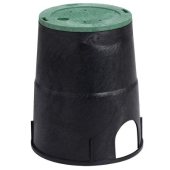I have a pond on my property that's fed by a small creek. The creek is usually two to three feet wide and an inch or two deep. It runs all year. There was recently work done on the dam. The pond was drained while the dam work was done. When it was refilled I noticed there was a wet spot on the back side of the dam. It's not near the center of the dam where there is a drain pipe to a creek, it's more off to the side. When I pointed out the wet spot to the man who did the work for me, he said they noticed some water coming out of the ground when they dug down a couple feet so they could pack the main dam area with additional red clay. I think they may have created a seep. I have seeps on my property, but I had not noticed one within a hundred yards of the pond before the construction. He said when they laid down and packed the new additional clay, the water coming out of the ground disappeared. I'm trying to give you back story but maybe it's TMI.
Anyway, I'm in SC and we have had enormous amounts of rain (biblical proportions). The pond has held beautifully, never even close to flooding. The design of the drain pipe is another whole story but it's AMAZING!!!
Here is my question. The wet spot hasn't gone away. A small trickle of water is definitely forming and runs continually off to the side of the dam. The level of the pond stays stable except when it rains and the level goes up until the drain design kicks in and starts pumping water out. From just looking at the normal drain rate, the water in equals the water out. So,
1) should I be concerned about the wet spot and the trickle of water if it is a leak? I've thought about putting dye in the pond to see if the water in the trickle shows signs of the dye. (Then I think dye is probably not good for my pond)
2) if the water is seep water, should I be concerned about that wet spot compromising the integrity of the dam, or causing a leak eventually ?
Sigh. TIA for any suggestions





